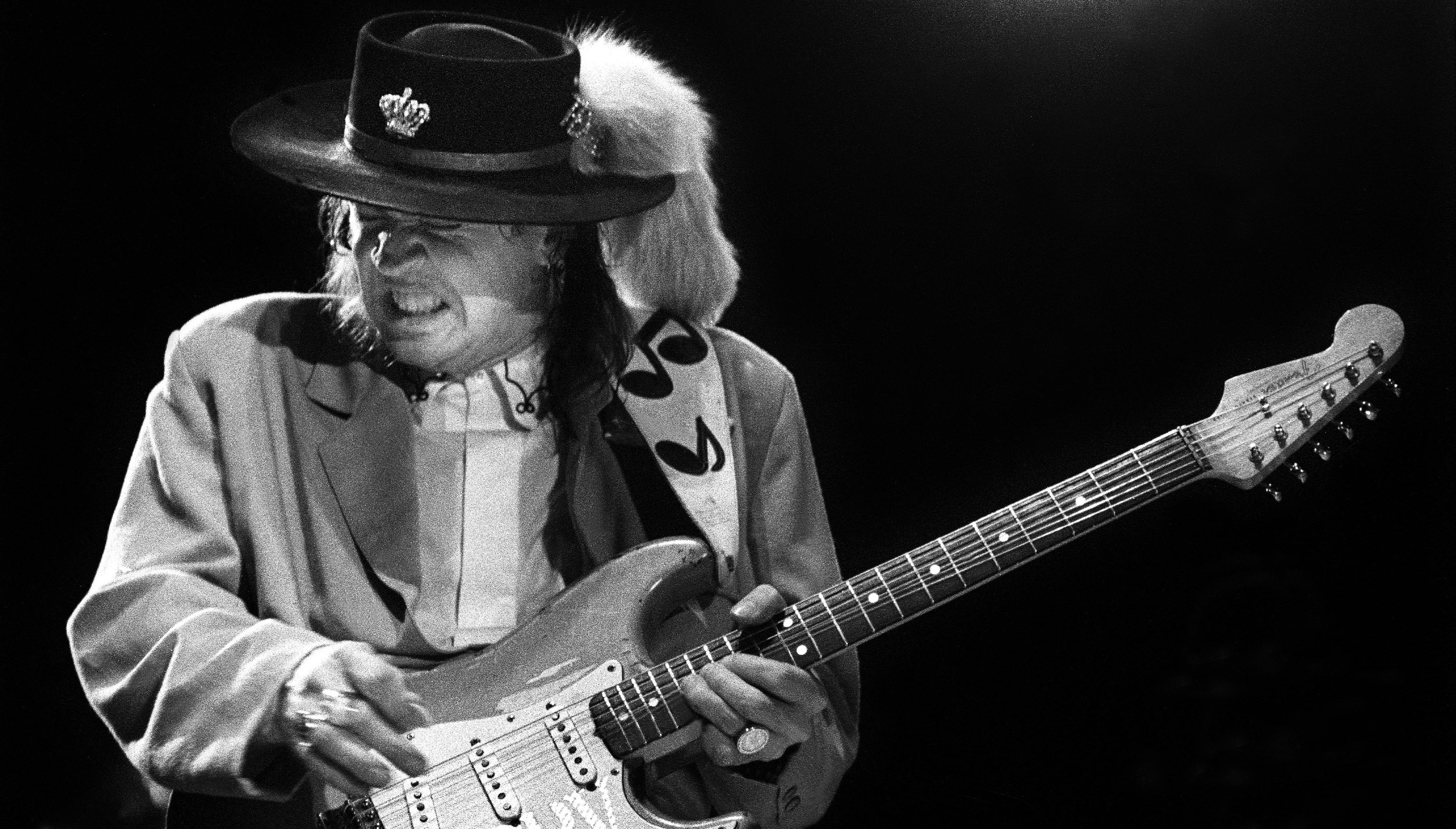5 songs guitarists need to hear by… Stevie Ray Vaughan
Essential guitar highlights from the Texan legend’s extensive back catalogue

It’s now 30 years since his tragic passing in 1990, but the power to move and astound in equal measure that infused Stevie Ray Vaughan’s playing remains undiminished. Of his contemporaries, only Eddie Van Halen caused a comparable shockwave when he redefined guitar’s vocabulary a few years prior to SRV’s Albert King-inspired licks lighting up Bowie’s Let’s Dance record; certainly no guitarist since has proved to be as gamechanging.
Stevie Ray’s recording career was cruelly cut short, and he only released four studio albums and a live set with his band Double Trouble during his time. Thankfully, all of them offer guitar masterclasses in different ways, and while they chart his evolution from barroom prodigy to fully fledged member of six-string royalty, they also show him refining but never ever losing the fearsome physicality, musicality and commitment that, even to this day, still sets him comfortably apart from the legion of imitators that sprung up in his wake.
So if you haven’t already, tune down to E♭, stick some heavy strings on your Strat and turn up loud for our pick of five essential tracks, each revealing a different side of the Lone Star State’s all-time king of the slingers
1. Rude Mood (Texas Flood, 1983)
SRV had plenty of party-piece instrumentals, among them gems such as Wham!, Scuttle Buttin’ and Say What!. But this is the ultimate introduction: a metronomic tour de force alternating a rumbling rhythmic refrain on the low strings with supercharged upper-register breaks, where chunky doublestops and fluid lead intermingle with superhuman finesse and precision.
Rude Mood mixes country, rock ’n’ roll, blues, major and minor pentatonics and rhythm and lead into one irresistible one-take juggernaut of technique, which also encapsulates nods to many of his own formative guitar influences in its licks – among them Lightnin’ Hopkins, Eric Clapton, the three Kings, Lonnie Mack and his brother Jimmie, to name but a few.
2. Lenny (Texas Flood, 1983)
Along with his stunning instrumental cover of Hendrix’s Little Wing, Lenny – an instrumental tribute to his wife Lenora – is a tender exploration of the sonic possibilities of the clean Strat sound in a master’s hands.
Want all the hottest music and gear news, reviews, deals, features and more, direct to your inbox? Sign up here.
The 6 and maj13 chords in its intro, swathed in vibrato, set the scene for SRV to stretch out in his solos which, when they come, extend beyond the boundaries of his Texas blues vocabulary, inflecting his breaks with the jazz influences he’d fully assimilated by the time of 1991’s spiritual successor, Riviera Paradise.
The 1983 concert version on Live At El Mocambo, where he plays the song using the Strat bought for him by his muse, is required viewing for SRV aficionados.
3. Texas Flood (Texas Flood, 1983)

This dark-and-stormy downtempo blues written by Joe Scott and Larry Davis in 1958 became SRV’s signature song. Like his idol Hendrix before him, the slow-blues backdrop always enabled Stevie Ray to pull out all the stops, and he varied his approach to the form during his career, ranging from the minor-key filmic, Buddy Guy-esque licks of Tin Pan Alley to the relentless assault of The Things (That) I Used To Do.
But Texas Flood, with its pinched notes, its crying bends, its pneumatic doublestops, its stinging vibrato, use of whammy bar and more besides, perfectly showcased the expressiveness and muscularity of Stevie Ray’s technique, refreshing the old-as-time format of the slow blues for a new generation of players into the bargain.
4. Couldn’t Stand The Weather (Couldn’t Stand The Weather, 1984)
Regrettably, SRV didn’t return nearly often enough to the territory marked out by this oddity in his catalogue: it’s a Frankenstein’s monster of a song, mixing r’n’b-style breakdowns with funk-influenced rhythm parts and even features his brother Jimmie on rhythm guitar.
Its hyperactive Nile Rodgers-esque chordal licks may steal the spotlight, but the song also features one of his most memorable solo sections, providing a rare glimpse of SRV shapeshifting his style to suit non-blues chord progressions.
Similar to when he startled the guitar world on Bowie’s Let’s Dance, the guitar solos here are molten eruptions of sustained Albert King-inspired bends, cascading pentatonic runs and channelled aggression.
Shaking the neck with bursts of powerful vibrato, SRV expertly modifies his tone and attack to suit the song’s shifting dynamics and uses a Roland Dimension D chorus unit for subtle phase-shifting.
5. Tightrope (In Step, 1989)

Classic interview: Stevie Ray Vaughan talks Texas blues, Strats and addiction
SRV had severe and long-standing issues with substance abuse, but he’d fully cleaned up and was in recovery when he recorded 1989’s In Step, his final Double Trouble studio album (although he did manage to record the Nile Rodgers-produced Family Style with his brother before his tragic death).
Returning to the studio with a Wall Of Doom consisting of 32 amps and a clearer head than ever before, he worried whether, now sober, he could still somehow summon the fire and intensity he’d conjured when fuelled by cocaine and Old Crown whiskey, the one often dissolved in the other.
He needn’t have worried. The slick, memorable guitar solos on this song alone (unusually, backed by rhythm guitar) – their push-and-pull with tempo, their snarling bursts of crackling technical virtuosity, their sheer inventiveness and intensity – sealed the deal, proving the sober SRV was, if anything, a much more creative and expressive guitarist than ever before.